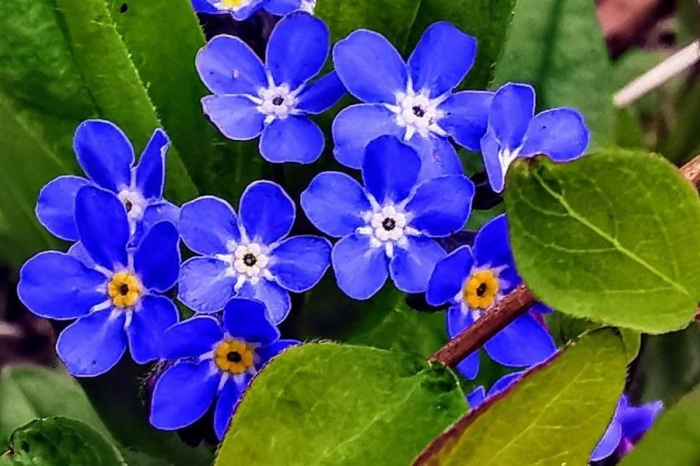Creeping Navelwort
(Omphalodes verna)
Creeping Navelwort (Omphalodes verna)
/
/

Anidra
CC BY-SA 4.0
Image By:
Anidra
Recorded By:
Copyright:
CC BY-SA 4.0
Copyright Notice:
Photo by: Anidra | License Type: CC BY-SA 4.0 | License URL: https://creativecommons.org/licenses/by-sa/4.0/ | Attribution: Anidra (cc-by-sa) | Rights Holder: Anidra | Publisher: PlantNet | Date Created: 2020-08-31T10:44:34Z | Title: Omphalodes verna Moench: flower | Notes: Primula veris L.: flower |























































Estimated Native Range
Summary
Omphalodes verna, commonly known as creeping navelwort or blue-eyed-Mary, is a rhizomatous herbaceous perennial native to the forest floors and shaded riverbanks of Europe. It typically forms low-growing clumps reaching 20–30 centimeters (7.9–11.8 inches) in height. The plant is characterized by its small, light blue hermaphrodite flowers with white or yellow star-shaped centers that appear in clusters of 3-5 on petiolated stalks. The wheel-shaped corolla is fused, five-lobed, and measures 7–15 millimeters (0.28–0.59 inches) in diameter. Creeping navelwort blooms profusely from March through May, offering a delicate display of color in the spring garden.
Creeping navelwort is valued for its ornamental foliage and flowers, which provide a charming ground cover in shaded garden areas. It is often used in woodland gardens, rock gardens, and as an underplanting for larger shrubs. This plant is relatively easy to maintain, requiring minimal care once established. It prefers moist, well-drained soils rich in organic matter and thrives in part shade to full shade. While it is drought-tolerant once established, consistent moisture will promote lusher growth. Creeping navelwort can be easily propagated from seeds and is not commonly affected by pests or diseases. However, it can be sensitive to overly wet or dry conditions. It is not known to be invasive and does not have aggressive roots, making it a safe choice for most garden settings.CC BY-SA 4.0
Creeping navelwort is valued for its ornamental foliage and flowers, which provide a charming ground cover in shaded garden areas. It is often used in woodland gardens, rock gardens, and as an underplanting for larger shrubs. This plant is relatively easy to maintain, requiring minimal care once established. It prefers moist, well-drained soils rich in organic matter and thrives in part shade to full shade. While it is drought-tolerant once established, consistent moisture will promote lusher growth. Creeping navelwort can be easily propagated from seeds and is not commonly affected by pests or diseases. However, it can be sensitive to overly wet or dry conditions. It is not known to be invasive and does not have aggressive roots, making it a safe choice for most garden settings.CC BY-SA 4.0
Plant Description
- Plant Type: Herb
- Height: 0.7-1 feet
- Width: 0.35-0.5 feet
- Growth Rate: Moderate
- Flower Color: Blue
- Flowering Season: Spring, Summer
- Leaf Retention: Semi-deciduous
Growth Requirements
- Sun: Part Shade, Full Shade
- Water: Low, Very Low
- Drainage: Slow, Medium, Fast
Common Uses
Bee Garden, Butterfly Garden, Groundcover, Low Maintenance, Rock Garden
Natural Habitat
Forest floors and shaded riverbanks of Europe
Other Names
Common Names: Creeping-Forget-Me-Not, Blue-Eyed-Mary, Blue-Eyed Mary, Vår-Kærminde, Frühlings-Gedenkemein, Nabelnuß, Petite Bourrache, Omphalodes Du Printemps, Omphalodès Du Printemps, Amerikaans Vergeet-Mij-Nietje
Scientific Names: , Omphalodes verna, Cynoglossum omphaloides, Cynoglossum omphalodes, Cynoglossum vernale, Omphalium vernum, Omphalodes omphalodes, Omphalodes omphaloides, Omphalodes repens, Picotia verna,
GBIF Accepted Name: Omphalodes verna Moench